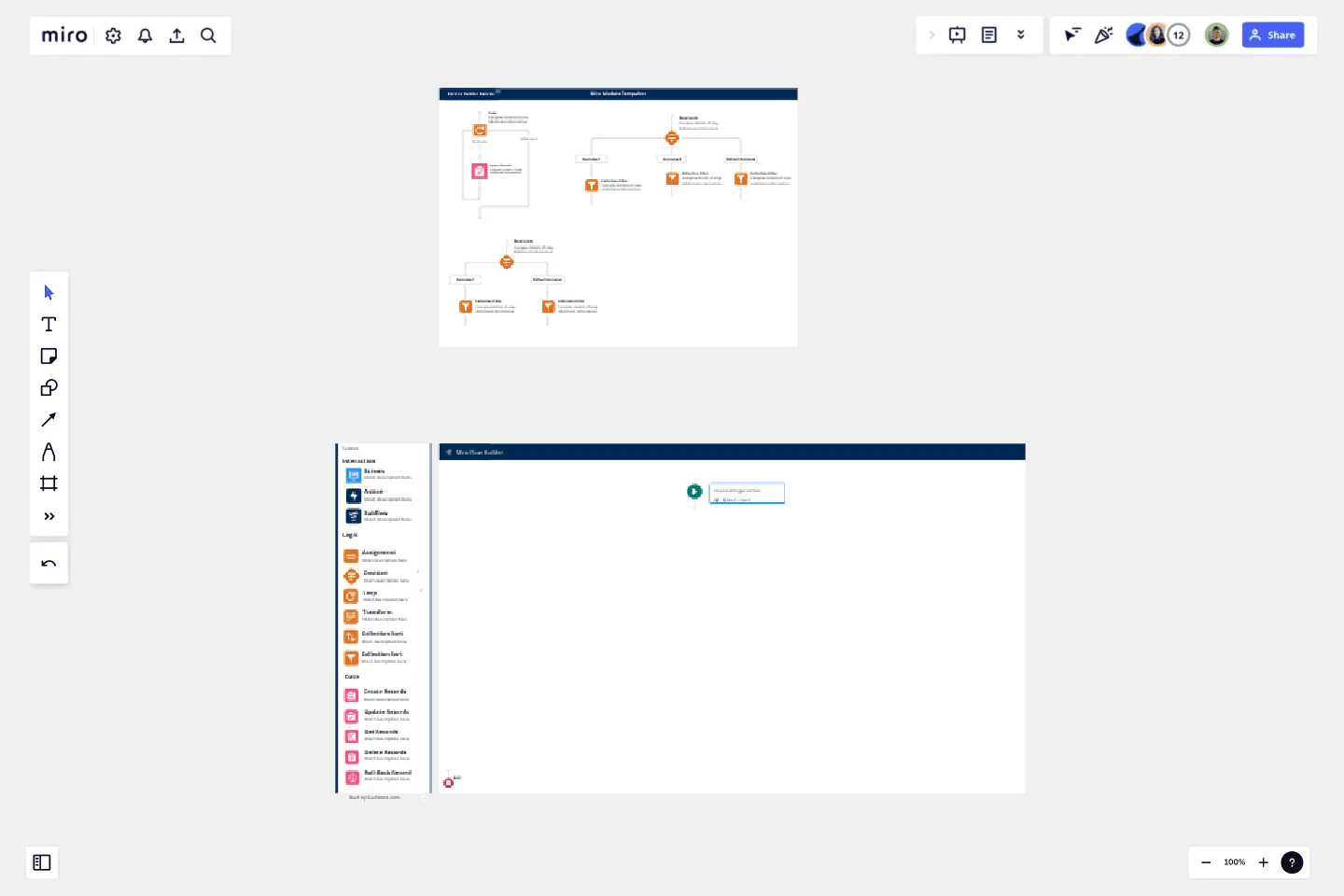Salesforce Flow Builder
This template empowers you to create comprehensive documentation for the incredible flows you develop in Salesforce.
This template empowers you to create comprehensive documentation for the flows you develop in Salesforce, making it an essential resource for training, change management, and team collaboration.
The template excels in two main areas:
Facilitating feedback collection without requiring Salesforce access.
Tracking and annotating Salesforce workflows post-build with detailed notes and context.
Designed to address the critical challenge of documenting complex automations, this template aims to make documentation woes a thing of the past.
This template was created by Stephen Stouffer.
Get started with this template right now.
Cloudflare RAG Architecture Knowledge Seeding Template
The Cloudflare RAG Architecture Knowledge Seeding template in Miro streamlines the sharing and visualization of cloud architecture knowledge, making it ideal for tasks like cloud infrastructure optimization and diagram creation. This template enables straightforward documentation and collaboration, ensuring complex information is accessible to all team members.
5-Set Venn Diagram
Works best for:
Venn Diagram
Analyze complex data with the 5 Set Venn Diagram template. This tool allows you to compare and contrast five different sets of data, highlighting intersections and unique elements. Perfect for in-depth data analysis, research, and strategic planning. Ideal for analysts, researchers, and educators looking to present comprehensive data insights in a clear and visual manner.
Onion Diagram Template
Works best for:
Diagramming, Mapping and Diagramming
The Onion Diagram Template is a distinct tool designed to visually represent layers of a specific concept, system, or process, akin to the layers of an onion. Each concentric layer of the diagram provides insights into a different aspect or phase of the topic at hand, moving from the core foundational element outwards to more peripheral components. One of the prime benefits of this template is its ability to offer hierarchical clarity. Users can immediately discern the importance, sequence, or interrelation of different elements within a system, facilitating enhanced comprehension and efficient decision-making.
Empathy Map for Product Development
Works best for:
Empathy Map
The Empathy Map for Product Development template helps you delve into the minds of your users, understanding their needs and pain points. Use this template to gather insights that inform your product features and design. By empathizing with your users, you can create products that truly resonate with them, leading to better adoption and satisfaction. Perfect for product managers and development teams.
Prioritized Product Roadmap
Works best for:
Roadmap, Mapping, Planning
The Prioritized Product Roadmap template enables teams to focus on delivering the most valuable features to customers. By prioritizing initiatives based on impact and effort, teams can maximize the return on investment and drive business value. This template fosters collaboration and alignment, ensuring that development efforts are aligned with strategic objectives and customer needs.
If then Flowchart Template
Works best for:
Flowcharts
The If-then Flowchart Template is a useful tool for decision-making. It visually maps out conditional steps and outcomes, allowing users to anticipate potential challenges and opportunities. This foresight is valuable for making informed decisions, especially for those with significant implications. Whether for business strategy, project management, or personal decision-making, the template helps navigate complex decision trees with confidence.
